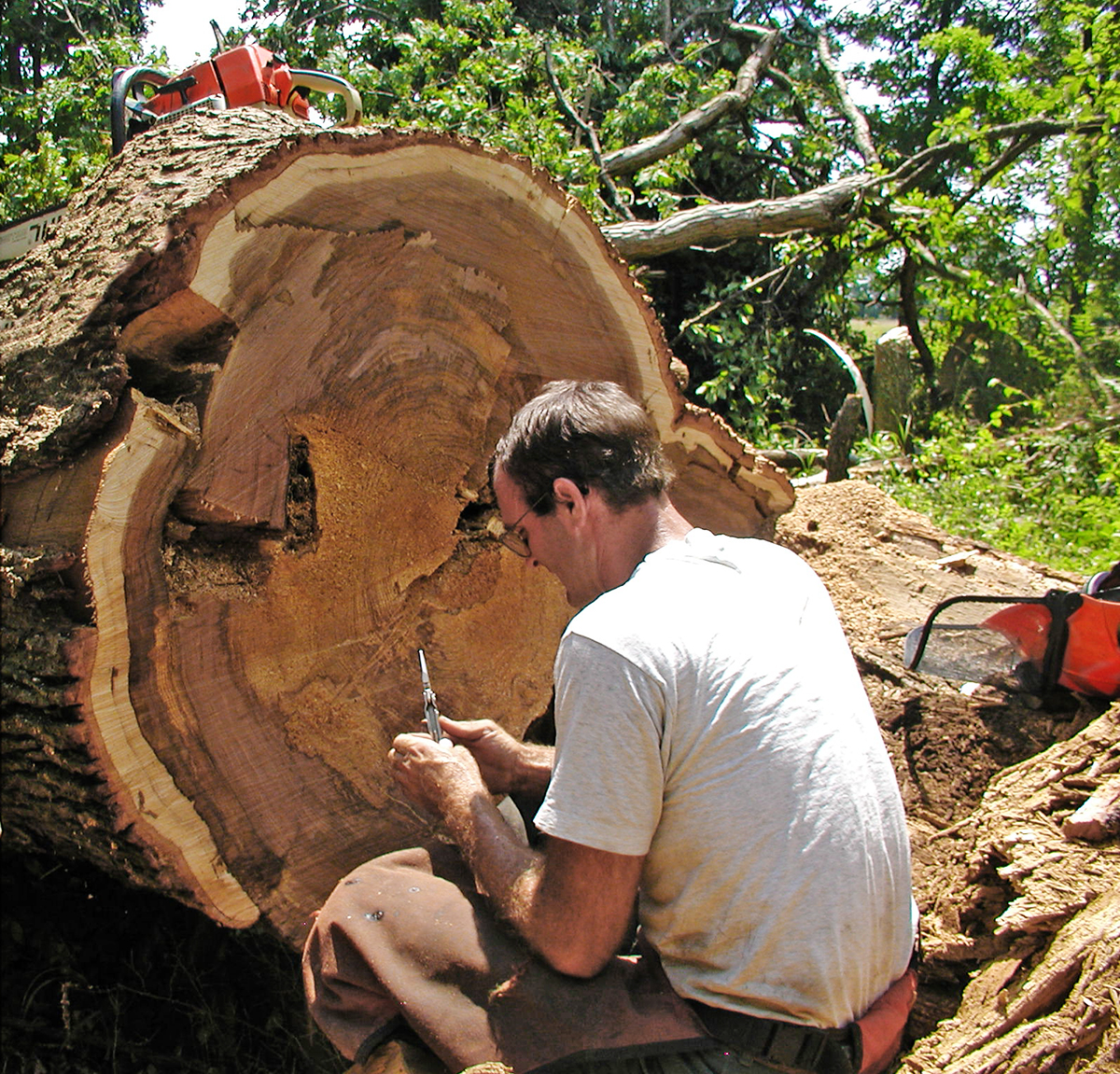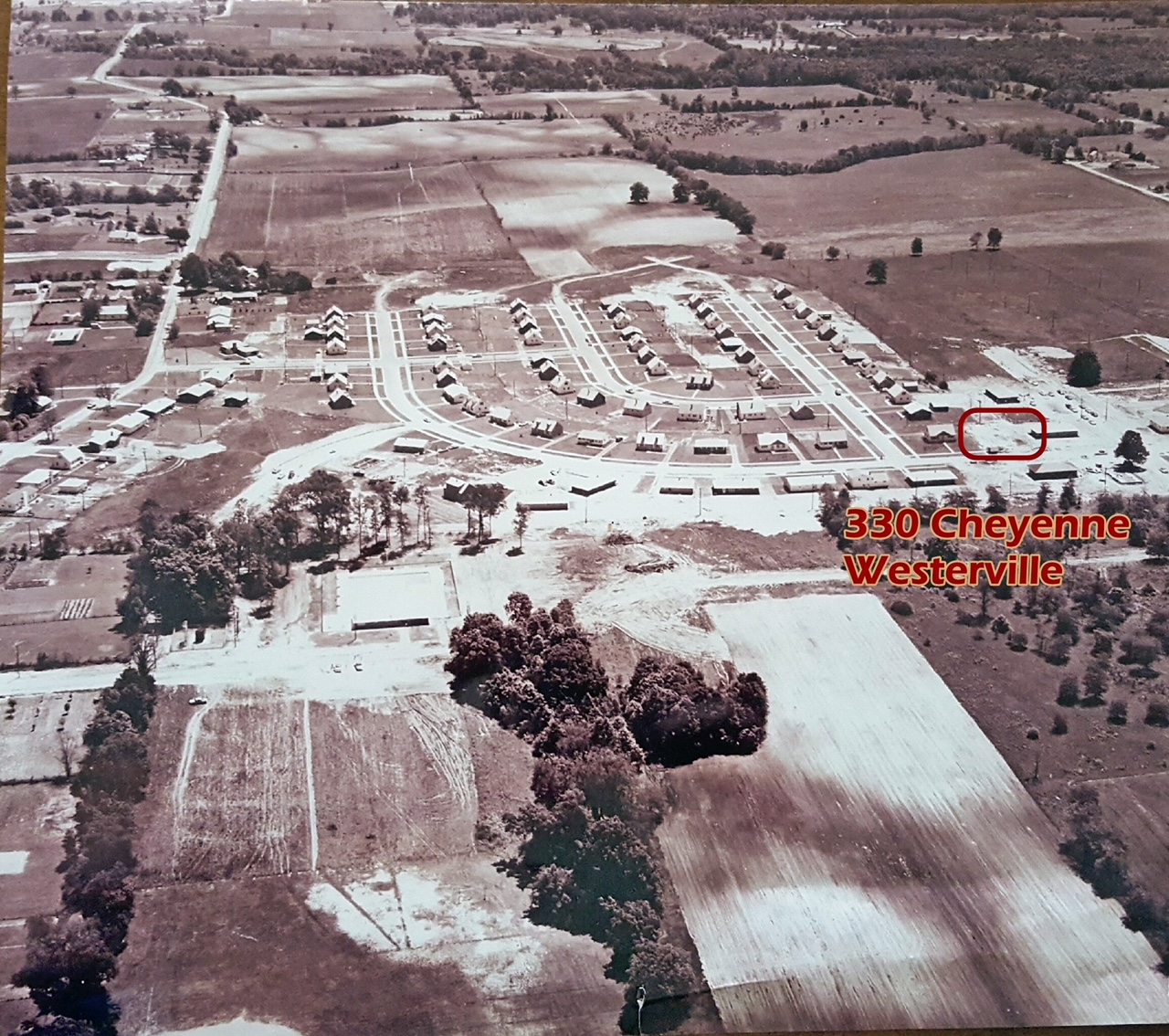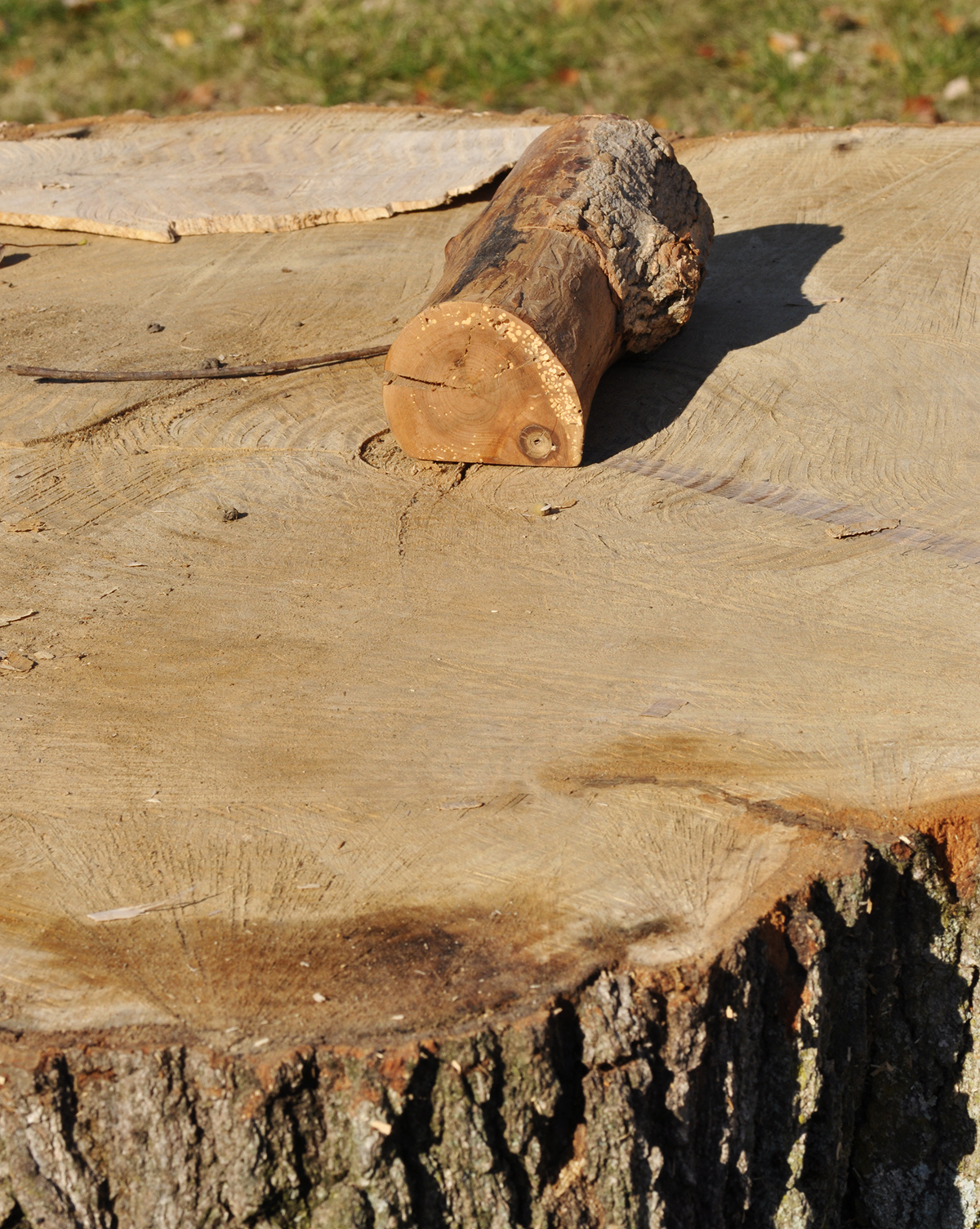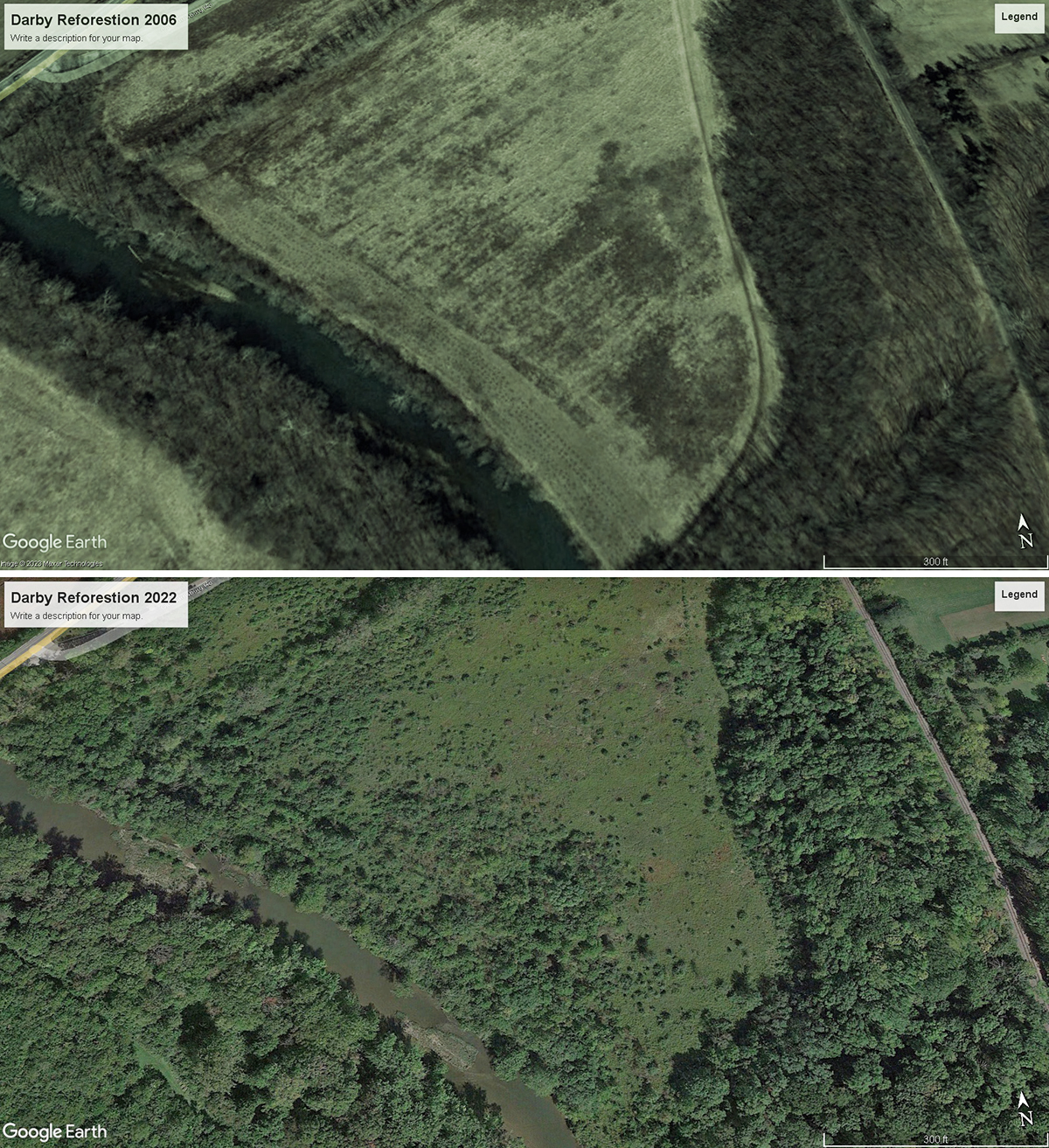ANDREW BOOSE
Aquatic Ecologist

A familiar question often asked is, “How old do you think that tree is?” There are ways of getting a tree’s age. Now the use of photography can even tell the age of trees as only the oldest of the trees in the Metro Parks predate the early years of photography in 1826. A tree would need to be over 197 years old to predate the first known photograph by Joseph Nicéphore Niépce. Today, archival aerial photos are coming in handy. The photo below is of a Westerville neighborhood in 1956 where one can see there are no trees in the developed area, hence we know that the great number of trees now established in that neighborhood cannot be much older than 66 years of age. Archival photos of Clear Creek show the Neotoma Valley nearly devoid of trees in 1924.

Counting the rings of a fallen tree or using an increment borer to get a core sample of a tree can also tell its age. That is, unless it grows in the tropics, where trees grow continually and do not have annual growth rings. So, what exactly is a tree ring? One annual tree ring is made up of the pores from spring growth that are large and the pores of late summer growth that are noticeably smaller. The use of tree rings to date natural and human-caused phenomena and other changes in the surrounding forest chronicled inside of a tree is called dendrochronology — or the study of time using tree rings.
Annual weather events such as wet springs, dry summers, forest fires, late cold snaps and cataclysmic storms can all be locked into the memory of a tree and recorded in its rings. Trees respond to change by growing at different rates. Years of drought result in slow growth and narrow tree rings. A 206-year-old or older tree may have recorded the year 1816, when Mt Tambora erupted and shaded most of Earth in ash and dust, resulting in “The year without summer;” the droughty Dust Bowl years of 1930-1936, and many other events recorded and unrecorded in history.

A common misconception is that trees can be aged by their size, but this does not work well in some circumstances. Take for instance cottonwoods along a stream. They can grow at rates of 2 inches or more a year in diameter. Hence it may only take a cottonwood 15 years to get to 30-inches in diameter. While another cottonwood no more than 100 feet away growing on a rocky ledge may only attain 15 inches in that same 20 years due to its poor growing conditions. The conditions a tree grows in will determine its size more so than its age. Notice the difference in the size of the stump and the small piece of tree trunk, in the photo above this paragraph. The oak stump is 65 years old while the piece of sugar maple is 47 years old. The oak grew in a yard in my neighborhood that is in the 1956 aerial photograph. The maple was growing on a rocky outcrop in northern Wisconsin. Quite the size difference for only an 18-year age difference.
The best way to age a tree is to plant it and watch it grow over the years, because the best time to plant a tree was yesterday.

